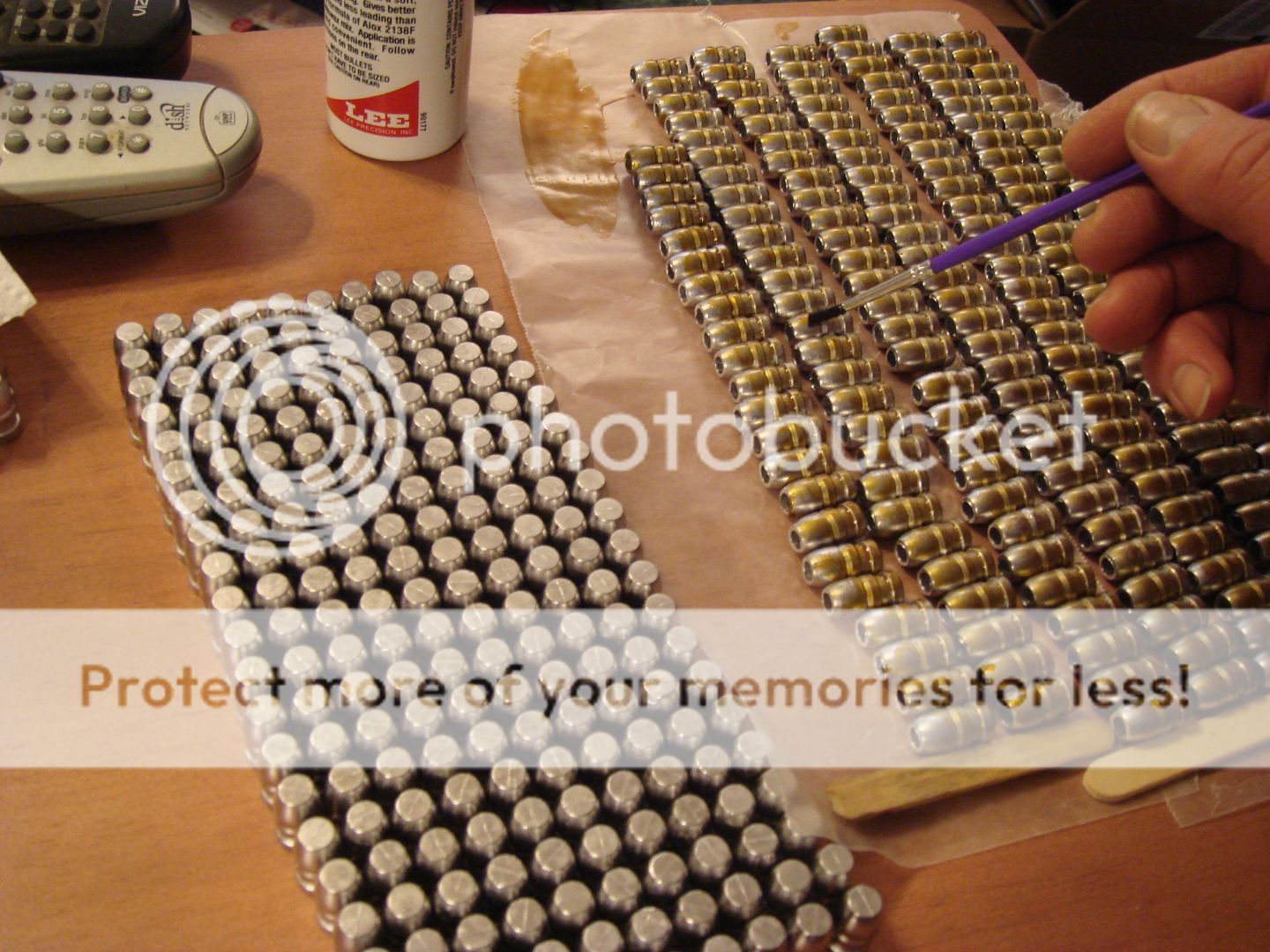So I've got 3 small bottles of alox to use up before I stop ever using it again.
I used to just follow the directions and shake & bake my cast rounds in alox, let dry overnight - then reload - but absolutely hated getting the lube on everything. It's a mess -
So I abandoned the ALOX directions and tried something different -
After reading what to do when your ALOX set up like amber - i.e. add small amounts of mineral spirits until it again flowed - I got out some meat trays and started just dripping a drop or two strategically. - see attached -
Then as I load the rounds, I take the round out of my press after seating the projectile, wipe the excess ALOX off the nose of the round - then do my crimp.
My thoughts on this is I only really want & need lube on the parts of the projectile touching the barrel of the weapon upon firing to help prevent leading.
I don't want any in contact with the powder.
I don't want any on the exposed nose of the round as it can and does gum up pretty much anything it comes in contact with. I also imagine it changes the drag coefficient on the round if the nose has anything but a perfectly even coat which is pretty much impossible.
And the stuff stains fabric.
But only having a drop or two on the center of the projectile causes far less of a mess.
So does our lil peanut gallery have any thoughts on why Lee recommends to shake and lube the entire round in ALOX? From experience, it doesn't make sense to me - maybe the crowd can shed some light on the logic.... just in case I've missed something else to consider.....
I used to just follow the directions and shake & bake my cast rounds in alox, let dry overnight - then reload - but absolutely hated getting the lube on everything. It's a mess -
So I abandoned the ALOX directions and tried something different -
After reading what to do when your ALOX set up like amber - i.e. add small amounts of mineral spirits until it again flowed - I got out some meat trays and started just dripping a drop or two strategically. - see attached -
Then as I load the rounds, I take the round out of my press after seating the projectile, wipe the excess ALOX off the nose of the round - then do my crimp.
My thoughts on this is I only really want & need lube on the parts of the projectile touching the barrel of the weapon upon firing to help prevent leading.
I don't want any in contact with the powder.
I don't want any on the exposed nose of the round as it can and does gum up pretty much anything it comes in contact with. I also imagine it changes the drag coefficient on the round if the nose has anything but a perfectly even coat which is pretty much impossible.
And the stuff stains fabric.
But only having a drop or two on the center of the projectile causes far less of a mess.
So does our lil peanut gallery have any thoughts on why Lee recommends to shake and lube the entire round in ALOX? From experience, it doesn't make sense to me - maybe the crowd can shed some light on the logic.... just in case I've missed something else to consider.....




